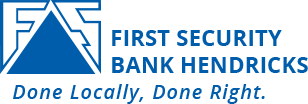Online Security
Your security and privacy is the most important thing we can work to ensure. And one of the ways we can do that is to provide you the tools to educate yourself about your own online security. Always verify the authenticity of websites you are directed to via an email, especially if it asks you for secure or personal information. The website may look exactly like the one you expect to see, but this can be easily copied. The simplest way to make sure the site you are going to is the real one, is to type the address in yourself. But, here are some tips:
- Web browsers contain a VeriSign check mark or padlock icon to the right of the site address when you log on to a secure page. Check the SSL security certificate by double clicking the check mark or padlock icon. Be sure that the URL (website address) on the certificate matches the URL of the page you are viewing. Also, be sure that the URL begins with HTTPS, instead of HTTP.
- When you are finished with any secure online session (such as online banking), always remember to exit or log off and close your browser window, particularly when using public Internet access service.
- Never send personal information in un-encrypted Internet-based email. Regular email can potentially be intercepted by anyone on the Internet.
- Do not check the box that asks your computer to “remember your passwords” or use other auto fill features of your browser. That defeats the security of passwords.
Computer Security

